
Sauces & Stuff
Homemade Yogurt
Creamy Homemade Yogurt is so luscious in taste and texture, and so simple to make, once you try it, you may never purchase it again. When you make yogurt at home, you control everything about it — quality of ingredients, thickness, and tartness of the finished product. Incubate your yogurt based on your taste preferences; more time for more tartness. For thinner yogurt, skip the nonfat dry milk.
Ingredients
HEAT:
STIR IN:
Test Kitchen Tip
If you plan to incubate the yogurt in jars (as opposed to a bowl), pay attention to the quantity you'll be able to make. A half recipe will fill 5 one-cup canning jars, which should fit in most slow cookers or Instant Pots.
Instructions
Heat milk with nonfat dry milk to 185°F in a double boiler over medium, stirring frequently, about 30 minutes. Immediately transfer milk to an ice bath; chill to 115°F and remove from ice bath.
Stir in yogurt or yogurt starter when milk cools to 110°F.
Ladle yogurt base into 8 to 10 half-pint glass jars or vessels with airtight lids and incubate with whichever method you choose from our How to Make Yogurt at Home article for 5–10 hours. Refrigerate yogurt at least 8 hours before eating. Yogurt will keep up to 2 weeks in the refrigerator.
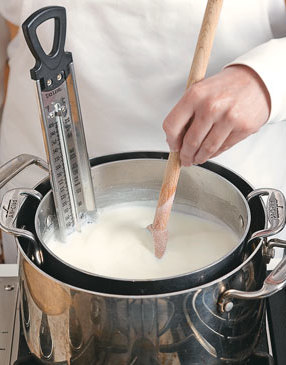
Heating milk kills microorganisms in it that can compete with bacteria in the yogurt cultures you add.
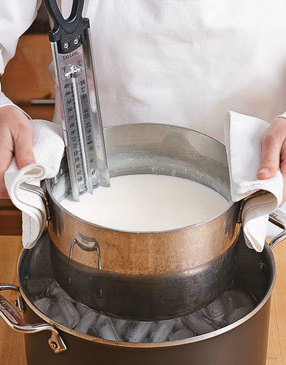
Milk cools fastest in an ice bath, but cooling at room temperature, stirring periodically, works too.
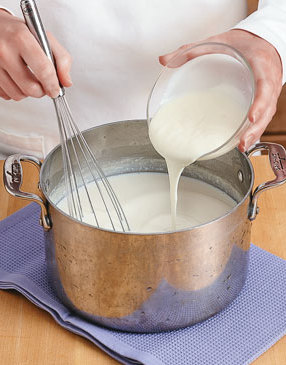
Add the starter, whisking just to incorporate, and transfer the mixture to your incubating containers (either those that come with a machine or those that can be sealed airtight).
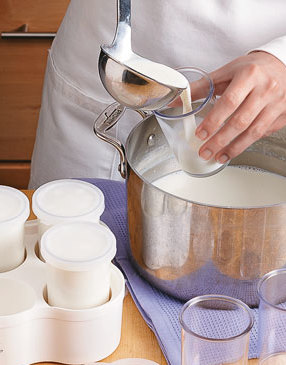
The optimal temperature for the bacteria to feed on the sugars in the milk is 122°F. Incubate the yogurt at this temperature with one of the methods, right, to “ripen” it.
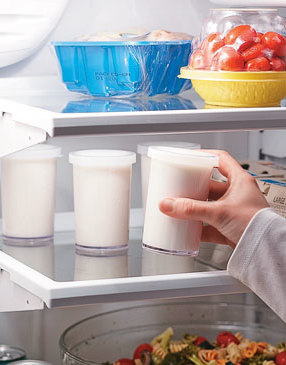
You’re not finished yet. After the yogurt ripens (during incubation) you need to chill it so the bacteria stop feeding. The chilling also allows the yogurt to thicken.
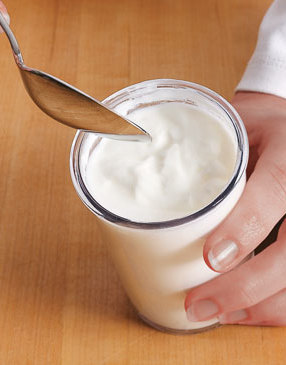
When you open chilled yogurt, you’ll sometimes notice a yellowish liquid on top. That’s the whey. Either simply stir it back into the yogurt, or pour it off and discard.
Nutritional Facts
Nutritional Facts
Per cup
Calories: 117
% Daily Value*
Total Fat 4g 6%
Saturated Fat 2g 10%
Cholesterol 17mg 5%
Sodium 121mg 5%
Carbs 12g 4%
Fiber 0g 0%
Protein 8g
*Percent Daily Values are based on a 2,000 calorie diet.